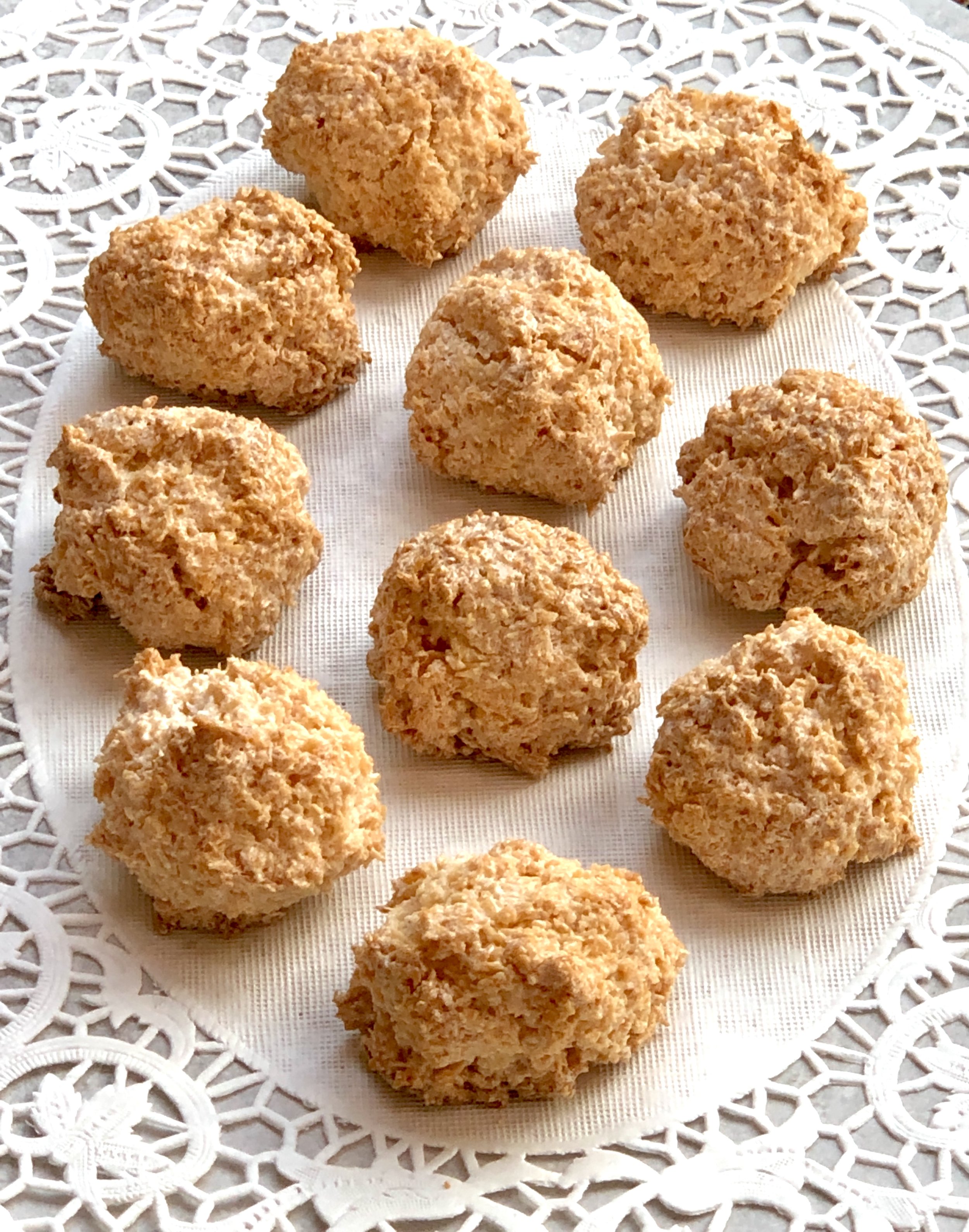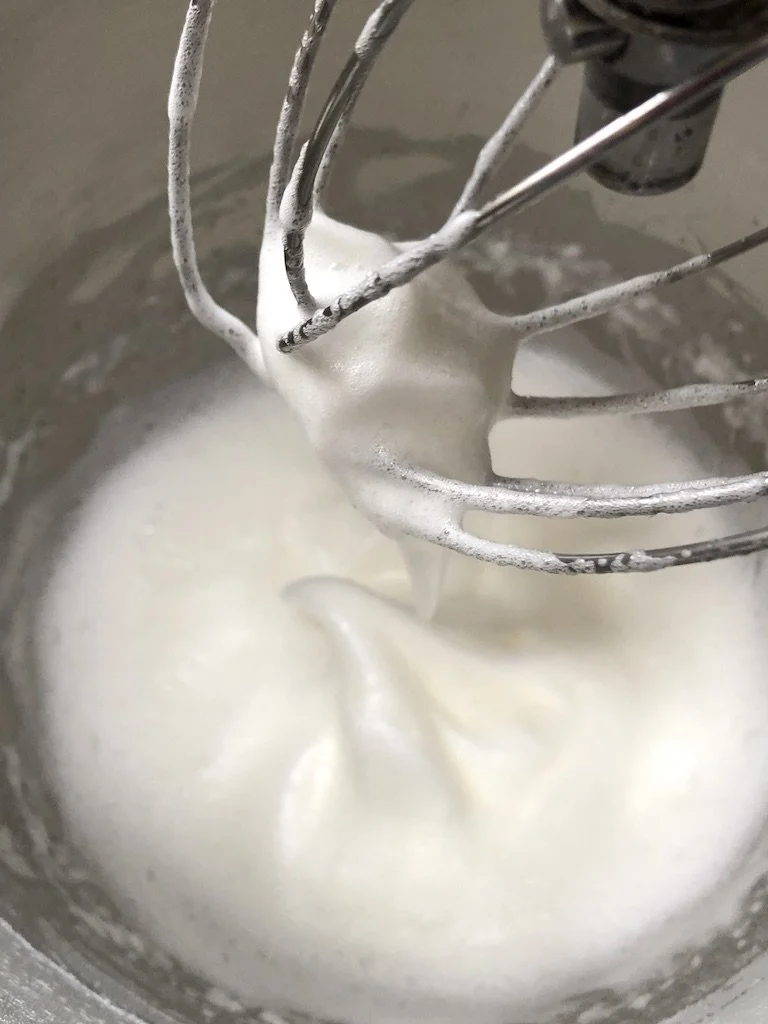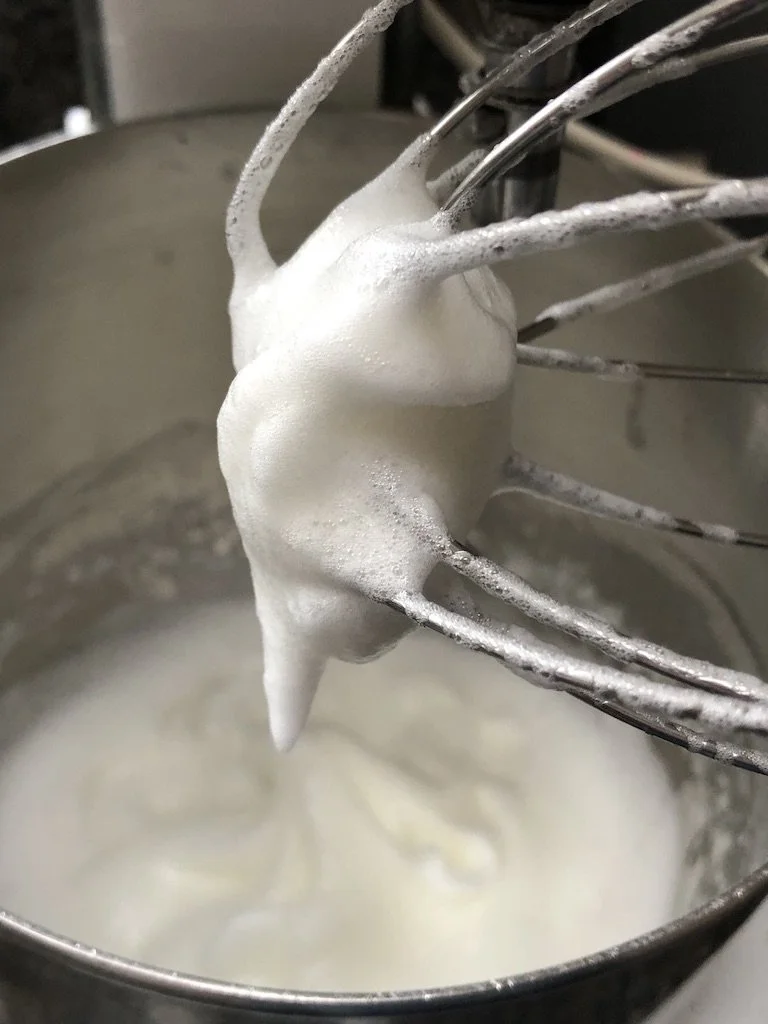I’ve been baking lots of gluten-free butter cookies lately, experimenting for Passover — using our family “fannies” or butter cookies as a base. But because the recipes use egg yolks I had a ton of whites left over. So …… I’ve also been experimenting with meringues (see how-to whip egg whites) and decided to use some for cookies. These coconut cookies are not only an easy way to use meringue but they are tender and sweet and perfect for Passover.
Here’s how: mix 2 cups of meringue (recipe below) with 1-1/2 to 2 cups shredded coconut (amount depends on the size of the shreds: you need enough to form a soft “dough”). Place blobs of the dough (about 1-1/2 inches) on a parchment lined cookie sheet. Preheat the oven to 325 degrees. Bake for 15-22 minutes or until lightly browned. Some people prefer these very light color; we like them honey colored.
I’ve now made these cookies several times. The less coconut you use, the softer and flatter the cookies will be. But either way, the cookies are tender, sweet and oh so tasty!
Meringue:
4 large egg whites at room temperature
1 tablespoon lemon juice
1/4 teaspoon salt
1 cup sugar
3/4 teaspoon vanilla extract
Beat the egg whites in the bowl of an electric mixer with whisk attachment set at medium speed until the mixture is foamy. Add the lemon juice and salt and beat, gradually increasing the speed, until soft peaks form. Gradually add the sugar and continue to beat, gradually increasing the speed to high, until the mixture stands in stiff, glossy peaks. Stir in the vanilla extract.





